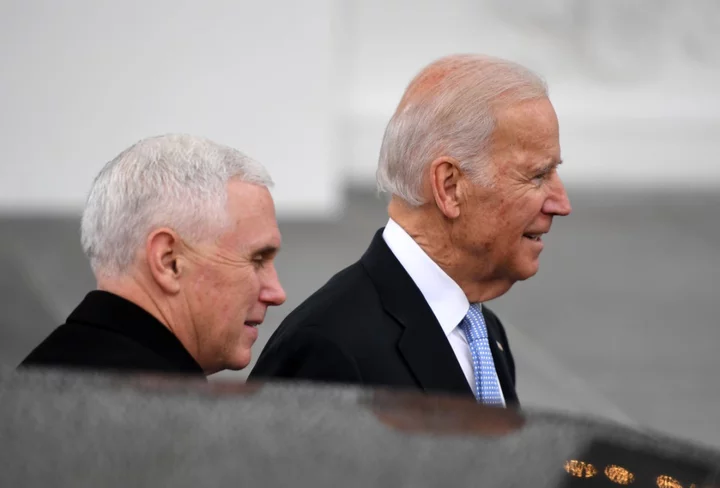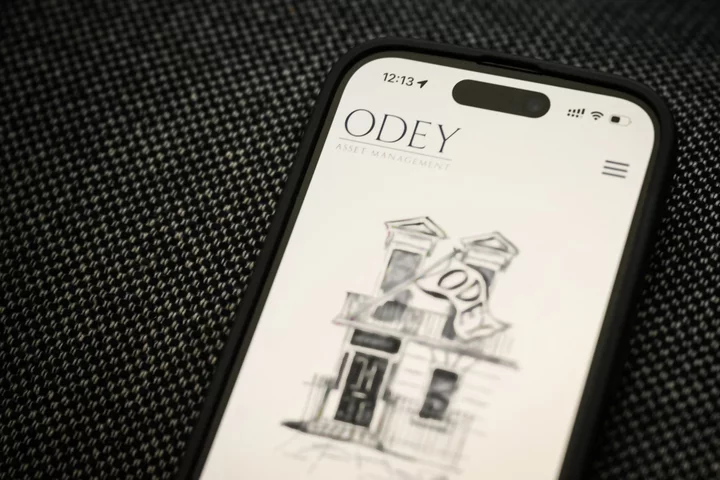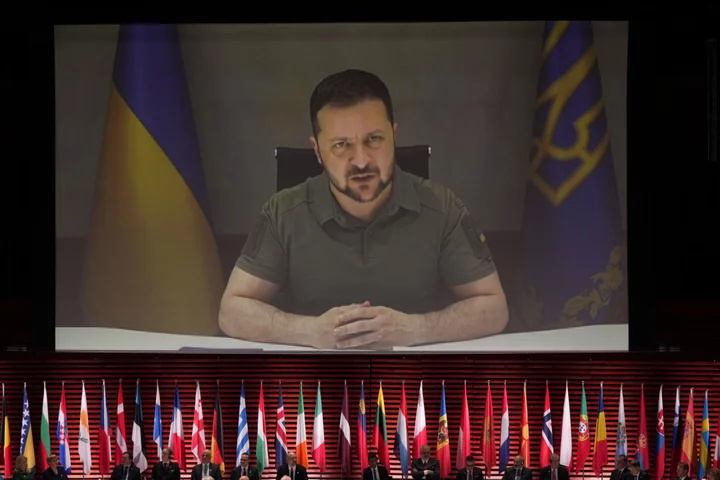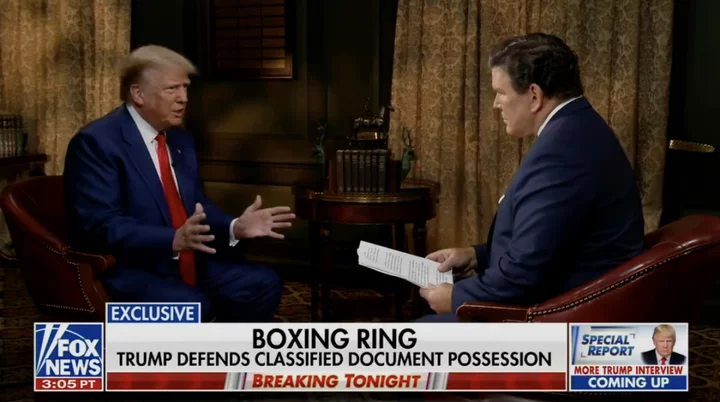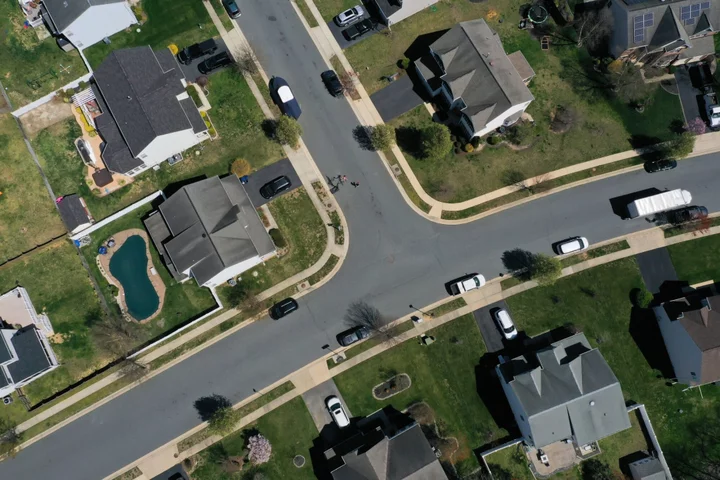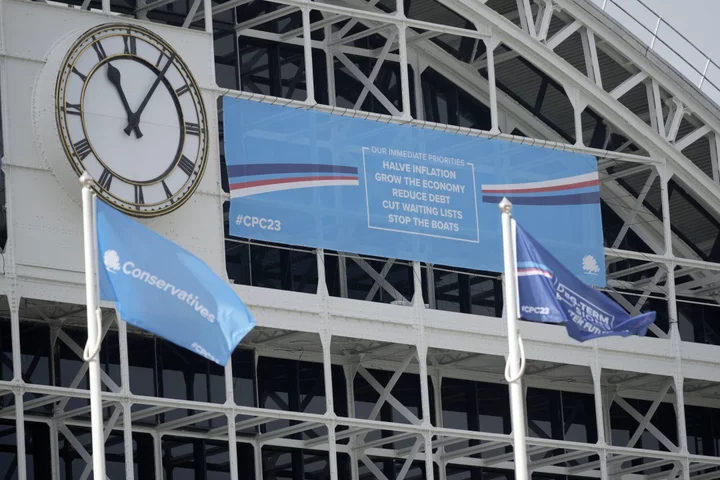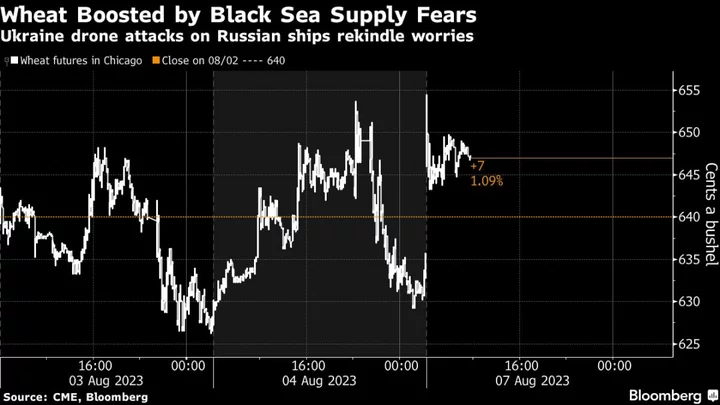Donald Trump’s supporters and many Republican officials contend that the former president is the target of a politically weaponised justice system that has ignored similar alleged crimes committed by his rivals. “Lock her up” chants directed at Hillary Clinton still dominate GOP rallies. House Republicans have launched committees to investigate the sitting president and his family. But in classified documents cases involving President Joe Biden and former vice president Mike Pence, both men cooperated with federal law enforcement and returned those records. Ms Clinton was not found to have deliberately mishandled classified information or obstruct justice in the recovery of communications. Mr Trump, according to prosecutors, did exactly that. A federal indictment details the alleged coordination among Mr Trump, his aides and attorneys to bring documents to his Mar-a-Lago property and, later, conceal them from law enforcement when US officials sought their return. His alleged refusal and obstruction is at the centre of the 37-count indictment against him. The indictment lays out more than 40 pages of allegations based on witness testimony and recordings allegedly showing how the former president sought to hide and keep classified documents by conspiring with his aides to obstruct an investigation into their recovery, then lied to both the government and his own attorneys about them. He faces 31 counts of willful retention of national defence information in violation of the Espionage Act, carrying a maximum prison sentence of 10 years. Each count represents a different top-secret document Mr Trump held at his Mar-a-Lago property, months after he left the White House in January 2021. The indictment does not include charges connected to dozens of other documents that he ultimately did return in the course of investigations surrounding the case – underscoring some of the key differences between his prosecution and those involving the former vice presidents. Late last year, a lawyer for Mr Biden discovered a “small number” of classified documents from his time as vice president under then-President Barack Obama during a search of a Washington DC office space. Those documents were returned to the Justice Department. Another batch of documents were discovered at his home in Wilmington, Delaware. Federal law enforcement agents found more when they searched the property. In January, US Attorney General Merrick Garland named a special counsel to investigate those documents, which is still ongoing. No charges have been filed. The Justice Department also closed an investigation into Mr Pence earlier this month after the discovery of classified material at his home in Indiana. There were no allegations of obstruction or the willful retention of such documents, and no charges were brought against him. And in Ms Clinton’s case, then-FBI director James Comey said she was “extremely careless” with her handling of sensitive information, but law enforcement officials found no clear evidence that she intentionally obstructed justice or committed any other crimes in connection with the server. He said “no reasonable prosecutor” would have brought a case against her. Those findings stand in stark contrast to the allegations in the indictment against Mr Trump, who is accused of actively concealing documents and even suggesting that a lawyer hide them or falsely state to authorities that all requested records were returned, while hundreds remained at his property. None of the nearly 200 documents that Mr Trump ultimately returned to authorities are connected to the charges against him, suggesting that if he had returned them in the first place, he may not face criminal prosecution. In January of last year, a year after leaving the White House after losing his 2020 re-election bid, Mr Trump gave 15 boxes of documents to the National Archives and Records Administration, as required under the Presidential Records Act. The agency wrote to Mr Trump in May 2021 noting that some documents were missing, noting that there are “certain paper/textual records that we cannot account for.” Around that same time, according to the indictment, Mr Trump directed aides to clear a storage room on the ground floor of Mar-a-Lago. More than 80 boxes were moved there, according to prosecutors. A few months later, he allegedly showed a “plan of attack” document prepared by the US Department of Defense to a group at his Bedminster, New Jersey club. “As president I could have declassified it,” he said, according to a transcript of a recorded conversation in the indictment. “Now I can’t, you know, but this is still a secret.” The National Archives received 15 boxes from Mr Trump in January 2022, 14 of which contained classified materials, according to prosecutors. Among them, 67 were marked “confidential,” 92 were marked “secret” and 25 were marked “top secret.” The next month, the agency alerted the US Department of Justice that classified information was discovered in those boxes. It was then that a criminal investigation surrounding the former president started to build – not from the results of the National Archives and its ultimately successful recovery of 15 boxes. A federal grand jury was opened in April of last year. In the weeks and months that followed, Mr Trump’s aide Walt Nauta began moving more than a dozen boxes out of the storage room, according to the indictment. Mr Nauta also is charged in connection with the case. On 3 June of last year, Mr Trump’s then-attorney Christina Bobb falsely certified to federal law enforcement that the former president’s legal team performed a “diligent search” for “any and all responsive documents” at his property, and that no other classified documents were found, according to prosecutors. The Justice Department received 38 documents in that file, including 17 marked “top secret,” 16 labeled “secret” and five others marked as confidential. Meanwhile, Mr Nauta and others loaded several boxes onto a plane that Mr Trump boarded out of his Florida home, according to the indictment. In August, FBI agents performed a search of Mar-a-Lago and discovered more than 100 classified documents among hundreds of government documents and photographs. In the documents outlined in the indictment, at least two of which involved nuclear secrets according to an inventory listed in the indictment, 21 were discovered by FBI agents who searched Mar-a-Lago. Ten others were turned over to federal authorities last June in response to a grand jury subpoena. Others involved intelligence briefings, foreign military activity, communication with foreign leaders, foreign military impacts on US interests, and communications with a foreign leader. According to prosecutors, Mr Trump conspired to conceal documents from a grand jury and federal officials, by suggesting that his attorneys make false statements to authorities, by moving boxes of documents to hide from attorneys, by suggesting that documents be hidden or destroyed, and by falsely certifying that classified documents were produced to authorities “when, in fact, they had not.” Prosecutors are expected to present compelling evidence that the former president knowingly and deliberately misled his attorneys about his retention of sensitive documents He also appears, on a tape, six months after leaving office, saying that a document in his possession was “classified”, “highly confidential” and “secret information” while admitting that he was not able to declassify it, because he was no longer president – undercutting a critical part of his public defence over the last several months. Read More Trump indictment - news: Trump vows revenge as he lands in Miami for arraignment on 37 federal charges Trump, Biden, Pence - who else? Inside the presidential scramble to check for classified documents How Trump’s second indictment unfolded: A timeline of the investigation into Mar-a-Lago documents ‘This is war’: Police monitoring online far-right threats and pro-Trump protests with federal indictment Handcuffs, fingerprints or a mugshot? What to expect as Trump faces arraignment in federal court Aileen Cannon: The judge with Trump’s fate in her hands was appointed by him
Donald Trump’s supporters and many Republican officials contend that the former president is the target of a politically weaponised justice system that has ignored similar alleged crimes committed by his rivals.
“Lock her up” chants directed at Hillary Clinton still dominate GOP rallies. House Republicans have launched committees to investigate the sitting president and his family.
But in classified documents cases involving President Joe Biden and former vice president Mike Pence, both men cooperated with federal law enforcement and returned those records. Ms Clinton was not found to have deliberately mishandled classified information or obstruct justice in the recovery of communications.
Mr Trump, according to prosecutors, did exactly that. A federal indictment details the alleged coordination among Mr Trump, his aides and attorneys to bring documents to his Mar-a-Lago property and, later, conceal them from law enforcement when US officials sought their return.
His alleged refusal and obstruction is at the centre of the 37-count indictment against him.
The indictment lays out more than 40 pages of allegations based on witness testimony and recordings allegedly showing how the former president sought to hide and keep classified documents by conspiring with his aides to obstruct an investigation into their recovery, then lied to both the government and his own attorneys about them.
He faces 31 counts of willful retention of national defence information in violation of the Espionage Act, carrying a maximum prison sentence of 10 years. Each count represents a different top-secret document Mr Trump held at his Mar-a-Lago property, months after he left the White House in January 2021.
The indictment does not include charges connected to dozens of other documents that he ultimately did return in the course of investigations surrounding the case – underscoring some of the key differences between his prosecution and those involving the former vice presidents.
Late last year, a lawyer for Mr Biden discovered a “small number” of classified documents from his time as vice president under then-President Barack Obama during a search of a Washington DC office space. Those documents were returned to the Justice Department.
Another batch of documents were discovered at his home in Wilmington, Delaware. Federal law enforcement agents found more when they searched the property.
In January, US Attorney General Merrick Garland named a special counsel to investigate those documents, which is still ongoing. No charges have been filed.
The Justice Department also closed an investigation into Mr Pence earlier this month after the discovery of classified material at his home in Indiana. There were no allegations of obstruction or the willful retention of such documents, and no charges were brought against him.
And in Ms Clinton’s case, then-FBI director James Comey said she was “extremely careless” with her handling of sensitive information, but law enforcement officials found no clear evidence that she intentionally obstructed justice or committed any other crimes in connection with the server. He said “no reasonable prosecutor” would have brought a case against her.
Those findings stand in stark contrast to the allegations in the indictment against Mr Trump, who is accused of actively concealing documents and even suggesting that a lawyer hide them or falsely state to authorities that all requested records were returned, while hundreds remained at his property.
None of the nearly 200 documents that Mr Trump ultimately returned to authorities are connected to the charges against him, suggesting that if he had returned them in the first place, he may not face criminal prosecution.
In January of last year, a year after leaving the White House after losing his 2020 re-election bid, Mr Trump gave 15 boxes of documents to the National Archives and Records Administration, as required under the Presidential Records Act.
The agency wrote to Mr Trump in May 2021 noting that some documents were missing, noting that there are “certain paper/textual records that we cannot account for.”
Around that same time, according to the indictment, Mr Trump directed aides to clear a storage room on the ground floor of Mar-a-Lago. More than 80 boxes were moved there, according to prosecutors.
A few months later, he allegedly showed a “plan of attack” document prepared by the US Department of Defense to a group at his Bedminster, New Jersey club. “As president I could have declassified it,” he said, according to a transcript of a recorded conversation in the indictment. “Now I can’t, you know, but this is still a secret.”
The National Archives received 15 boxes from Mr Trump in January 2022, 14 of which contained classified materials, according to prosecutors. Among them, 67 were marked “confidential,” 92 were marked “secret” and 25 were marked “top secret.”
The next month, the agency alerted the US Department of Justice that classified information was discovered in those boxes.
It was then that a criminal investigation surrounding the former president started to build – not from the results of the National Archives and its ultimately successful recovery of 15 boxes.
A federal grand jury was opened in April of last year. In the weeks and months that followed, Mr Trump’s aide Walt Nauta began moving more than a dozen boxes out of the storage room, according to the indictment. Mr Nauta also is charged in connection with the case.
On 3 June of last year, Mr Trump’s then-attorney Christina Bobb falsely certified to federal law enforcement that the former president’s legal team performed a “diligent search” for “any and all responsive documents” at his property, and that no other classified documents were found, according to prosecutors.
The Justice Department received 38 documents in that file, including 17 marked “top secret,” 16 labeled “secret” and five others marked as confidential.
Meanwhile, Mr Nauta and others loaded several boxes onto a plane that Mr Trump boarded out of his Florida home, according to the indictment.
In August, FBI agents performed a search of Mar-a-Lago and discovered more than 100 classified documents among hundreds of government documents and photographs.
In the documents outlined in the indictment, at least two of which involved nuclear secrets according to an inventory listed in the indictment, 21 were discovered by FBI agents who searched Mar-a-Lago. Ten others were turned over to federal authorities last June in response to a grand jury subpoena.
Others involved intelligence briefings, foreign military activity, communication with foreign leaders, foreign military impacts on US interests, and communications with a foreign leader.
According to prosecutors, Mr Trump conspired to conceal documents from a grand jury and federal officials, by suggesting that his attorneys make false statements to authorities, by moving boxes of documents to hide from attorneys, by suggesting that documents be hidden or destroyed, and by falsely certifying that classified documents were produced to authorities “when, in fact, they had not.”
Prosecutors are expected to present compelling evidence that the former president knowingly and deliberately misled his attorneys about his retention of sensitive documents
He also appears, on a tape, six months after leaving office, saying that a document in his possession was “classified”, “highly confidential” and “secret information” while admitting that he was not able to declassify it, because he was no longer president – undercutting a critical part of his public defence over the last several months.
Read More
Trump indictment - news: Trump vows revenge as he lands in Miami for arraignment on 37 federal charges
Trump, Biden, Pence - who else? Inside the presidential scramble to check for classified documents
How Trump’s second indictment unfolded: A timeline of the investigation into Mar-a-Lago documents
‘This is war’: Police monitoring online far-right threats and pro-Trump protests with federal indictment
Handcuffs, fingerprints or a mugshot? What to expect as Trump faces arraignment in federal court
Aileen Cannon: The judge with Trump’s fate in her hands was appointed by him

